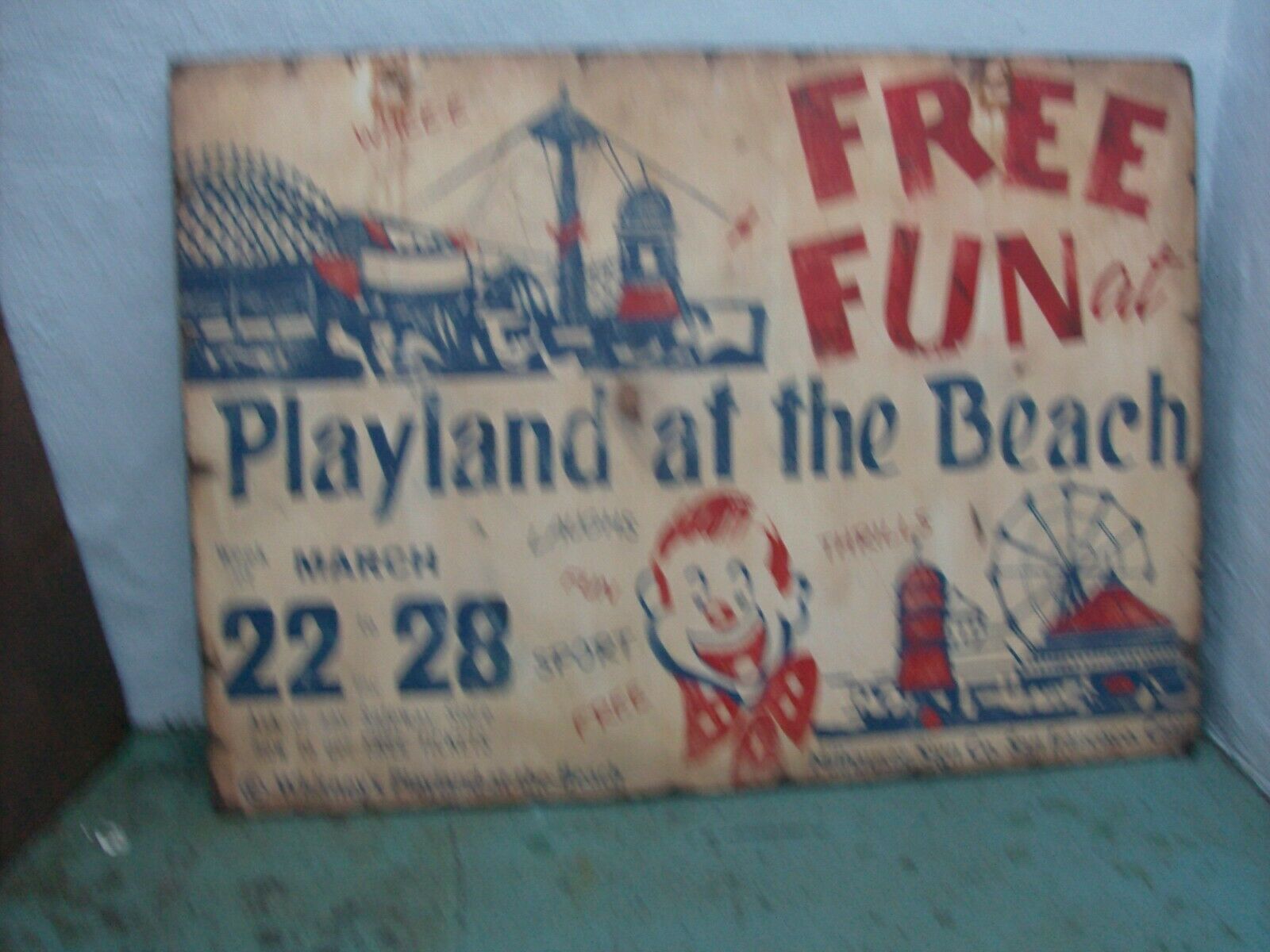-40%
PLAYLAND AT THE BEACH, SAN FRANCISCO AMUSEMENT PARK WOOD SIGN (L@@K!)
$ 831.6
- Description
- Size Guide
Description
Garage sale find. For auction is a vintage sign from "Playland At The Beach" in San Francisco. The 30" x 42" wood sign is in still very good condition. There is some pitting, scuffing, scrapes and some wood chipping on sign and along the edges. The brackets are missing at the top from where the sign must of hung, but there are holes still there. The sign was made by Milhauser Sign Company. I was told this sign came out of the inventory of "Playland Not At The Beach Museum" in the East Bay, when the establishment closed in the mid-2000s. Shipping is .00 for CA., Nevada, Oregon, Washington, Utah, and Idaho. All other states 5.00. Free local pickup.About "Playland at the Beach":
Opened:
1920s (when Playland name began being used for the beach concessions)
Demolished:
1972
Playland began a series of waffle stands, shooting galleries, and other concessions at San Francisco's Ocean Beach designed to remove recreation-seekers from their nickels. In 1883, the Park and Ocean Railroad line opened and terminated at today's intersection of La Playa and Balboa Streets. Thousands of city residents used to train on Sundays to visit the beach, see the sea lions on the rocks, and visit roadhouses such as the Seal Rock House and the Cliff House.
The small gathering of carnival games and refreshment stands around the train station expanded in the 1910s when Charles I. D. Looff installed a carousel (officially a "Looff Hippodrome"), and John Friedle, who operated a candy stand and a few games, began to think big.
Friedle teamed up with Charles' son, Arthur, to make a real amusement park of large rides and attractions. "Chutes at the Beach" opened in 1921, along Ocean Beach between Balboa and Fulton Streets. "Shoot-the-Chutes" was a popular and well-known water ride, and the name "Chutes" had been used for earlier amusement parks in the city. There was no admission charge to visit the open park. Along with Looff's carousel and the Chutes, a fun house, bumper cars, coaster rides, and a Ferris Wheel stood among a midway of dozens of carnival games, souvenir shops, and food stands.
After the famous Big Dipper wooden roller coaster was built in 1922, and a larger Fun House in 1923, instant-photo studio operator George K. Whitney began buying up smaller leased concessions in the amusement park. In 1928, he and his brother Leo, purchased much of John Friedle's investment (Looff had already moved on), and the Whitney Brothers renamed the park Playland at the Beach.
Through the late 1920s and early 1930s, the Whitney acquired more and more of the game and restaurant operations in the park. They built new rides, renovated old ones, and added different restaurants, food stands, and transformed the old Ocean Beach Pavilion building into a restaurant and dance hall called "Topsy's Roost." They took over the Cliff House from the Sutro Family in 1936, and, after Leo Whitney retired, George bought the Sutro Baths complex in the 1950s.
Playland's heyday were the World War II years and 1950s. The park offered servicemen and women a relatively respectable place to have a good time from noon to midnight, and in the Baby Boomer years, San Francisco children were able to spend a full day at the amusements with allowance money. The Fun House, guarded by the legendary manic automaton, Laffing Sal, cost only a coin to enter. Generations of San Franciscans grew up eating Playland It's-Its (ice cream smooshed between two oatmeal cookies) and sit-down meals of quasi-Mexican food at The Hot House.
Playland declined in the 1960s. George Whitney died in 1958, and the Big Dipper had been torn down over safety code concerns and maintenance issues in 1955. The park became faded, dingy, and a hang-out for seedier elements as families in the city chose suburban destinations for recreation.
The park was purchased by developers and closed forever on Labor Day, September 4, 1972. After a sad auction of attractions and memorabilia (the carousel was saved and still runs at Yerba Buena Gardens) the park was demolished and became the site of condominium complexes that stand at the beach today.














